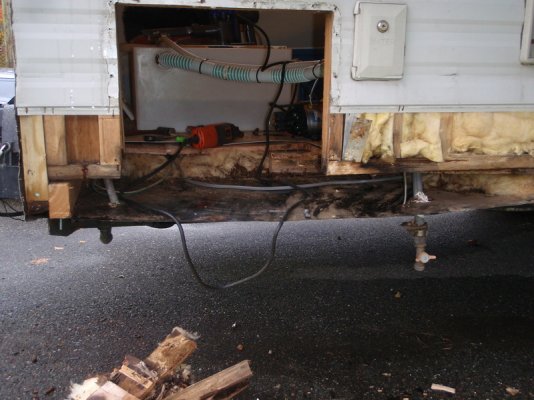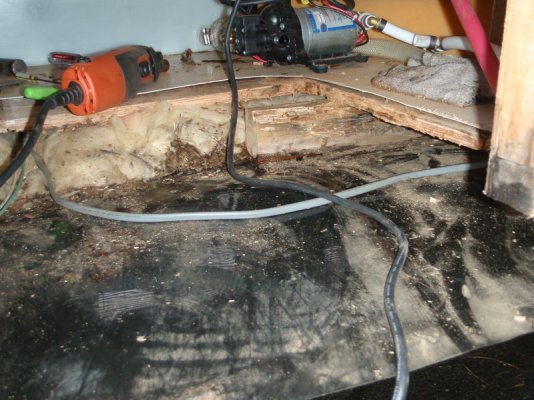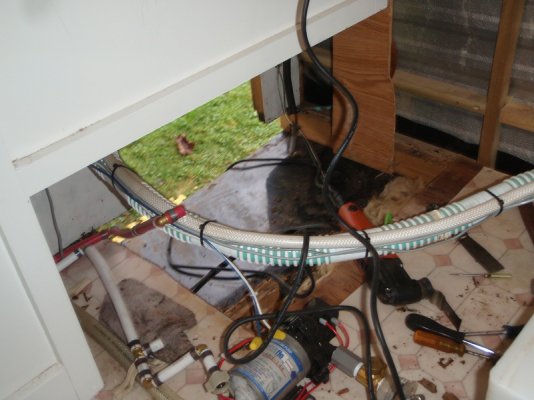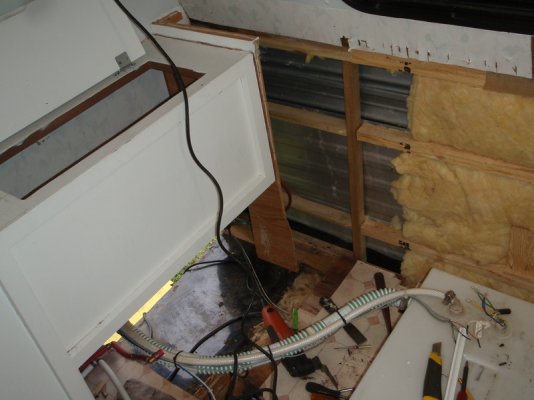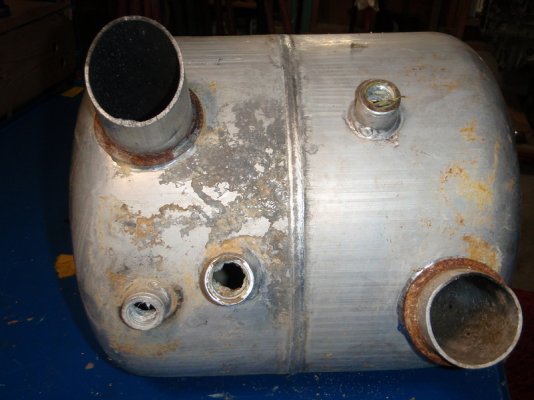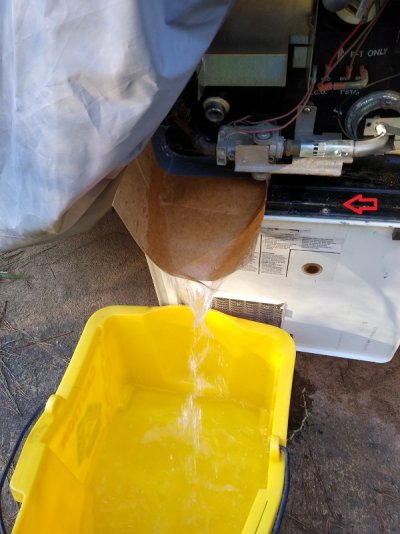JayArr
Well-known member
We bought this trailer in the spring of this year. It's a 1992 and in decent shape, the inside had all been painted, reupholstered and spruced up. New floors etc. We took it on a one month trip across the country and had a blast.
I noticed while winterizing it that there was no anode rod in the water tank so I bought and installed one.
I think I was twenty eight years too late!
While replacing the butyl plumbing with Pex I noticed that the insulation and cardboard like surround on the water tank was always wet. At first I thought it was from spillage when I cut the lines out to replace them but two weeks later it was still wet. When I dug into the problem a horrible reality set in.
The tank had rotted out from the inside and was leaking water at a very slow rate. This explains why our water pump would periodically turn on for a brief moment about every hour.
The whole front corner of the trailer was rotten. After removing the HW heater the floor under it came out in my hand as broken crumbling debris. The sill plates, floor joists and some of the wall structure in the front was all shot. I spent the entire weekend pulling the siding off and re-framing the front left corner and then putting it all back together.
So... Check your water heater! If it doesn't have a sacrificial anode put one in. If the previous owner had spent $20 I wouldn't have had to spend my entire weekend re-framing the trailer.
I noticed while winterizing it that there was no anode rod in the water tank so I bought and installed one.
I think I was twenty eight years too late!
While replacing the butyl plumbing with Pex I noticed that the insulation and cardboard like surround on the water tank was always wet. At first I thought it was from spillage when I cut the lines out to replace them but two weeks later it was still wet. When I dug into the problem a horrible reality set in.
The tank had rotted out from the inside and was leaking water at a very slow rate. This explains why our water pump would periodically turn on for a brief moment about every hour.
The whole front corner of the trailer was rotten. After removing the HW heater the floor under it came out in my hand as broken crumbling debris. The sill plates, floor joists and some of the wall structure in the front was all shot. I spent the entire weekend pulling the siding off and re-framing the front left corner and then putting it all back together.
So... Check your water heater! If it doesn't have a sacrificial anode put one in. If the previous owner had spent $20 I wouldn't have had to spend my entire weekend re-framing the trailer.

